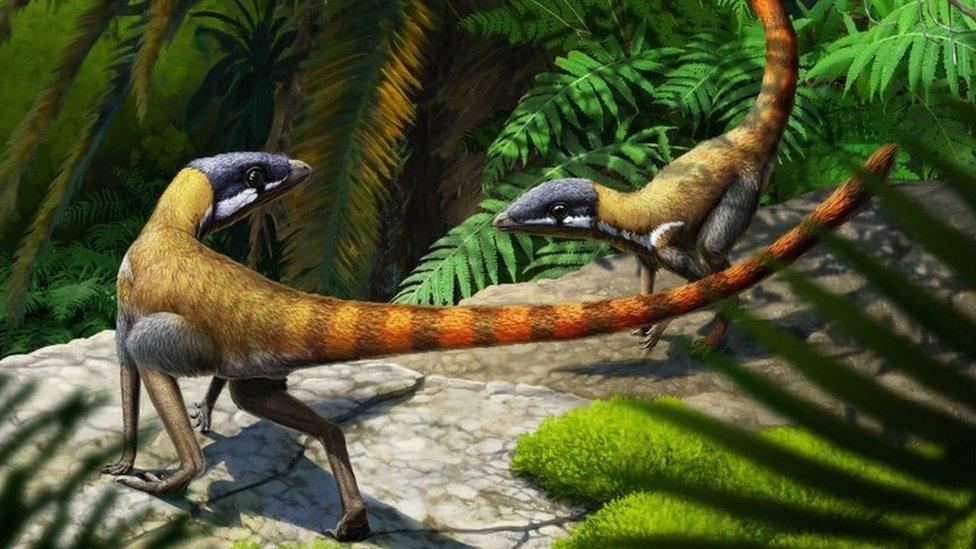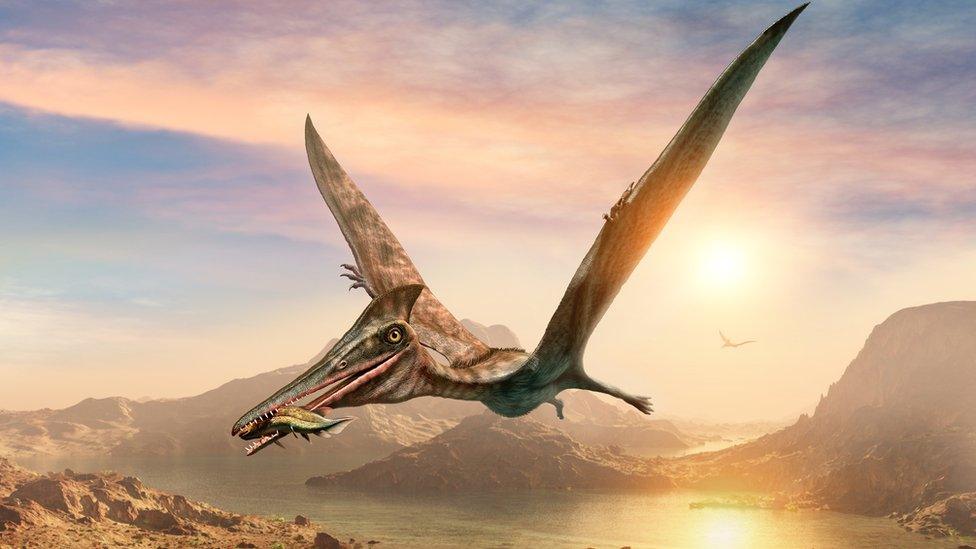Pterosaur: Scottish fossil identified as ancient flying reptile
- Published
- comments

Artist's impression of how the reptile called Scleromochlus taylori might have looked
Scientists say a fossil first found in Scotland more than a century ago was closely related to an extinct group of flying reptiles known as pterosaurs.
Pterosaurs lived during the age of dinosaurs and were one of the first animals that were able to fly.
The small cat-sized creature, named Scleromochlus taylori, is thought to have roamed the planet around 210-240 million years ago.
Dinosaur experts say that their findings could help us understand how pterosaurs evolved.
What did scientists find?
WATCH: Big Question - When did humans first discover dinosaurs?
The fossil was first discovered more than 100 years ago, near the town of Elgin in north-east Scotland.
However, the fossil was badly preserved in sandstone, so scientists were unable to study it in detail at the time.
Researchers have now used new imaging technology to get a better look of the fossil and they have been able to reconstruct the skeleton of the Scleromochlus species.
The findings suggest the reptile may have belonged to a family of ancient reptiles called Pterosauromorpha - that also includes pterosaurs and a group of small reptiles called lagerpetids.

Pterosaurs were close cousins of dinosaurs and were one of the first animals that were able to fly
The Scleromochlus species, was around 20cm long with a large head, short neck and a long tail which stood on spindly legs.
Experts believe that pterosaurs likely evolved from small, two-legged ancestors and have called the discovery 'exciting'.
Dr Davide Foffa, from National Museums Scotland who was involved with the study said that it was amazing "to be able to see and understand an animal which lived 230 million years ago and its relationship with the first animals ever to have flown."
